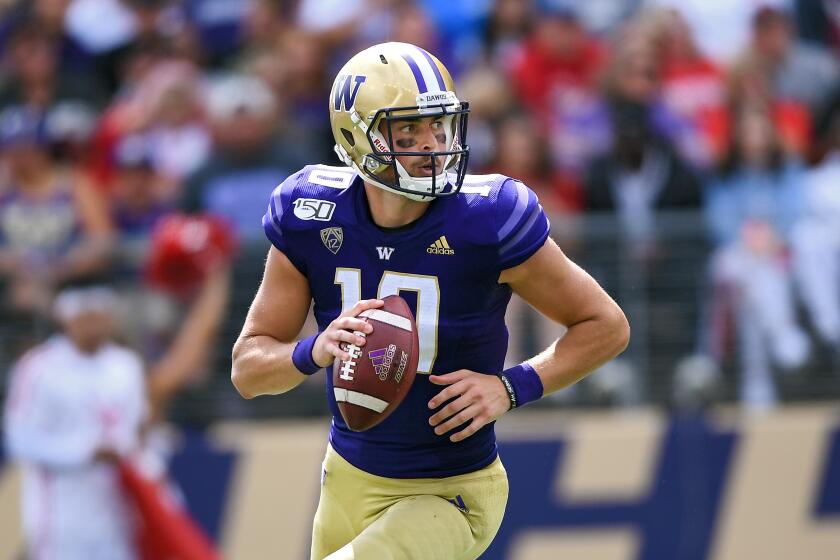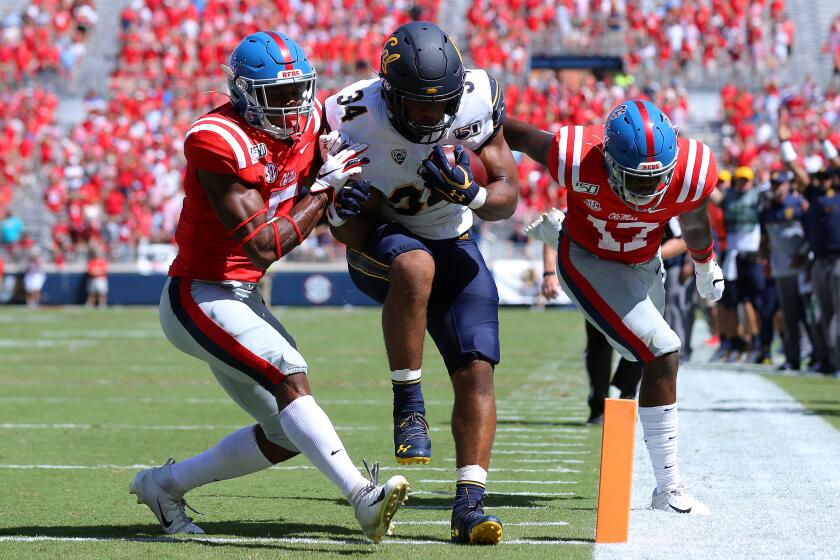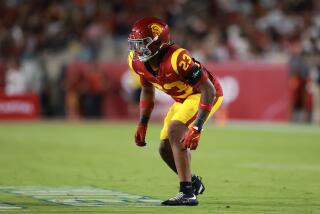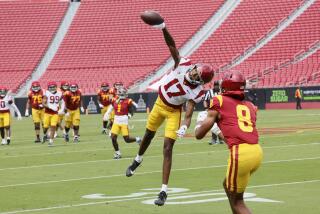USC’s banged-up secondary to face its biggest test yet against Washington
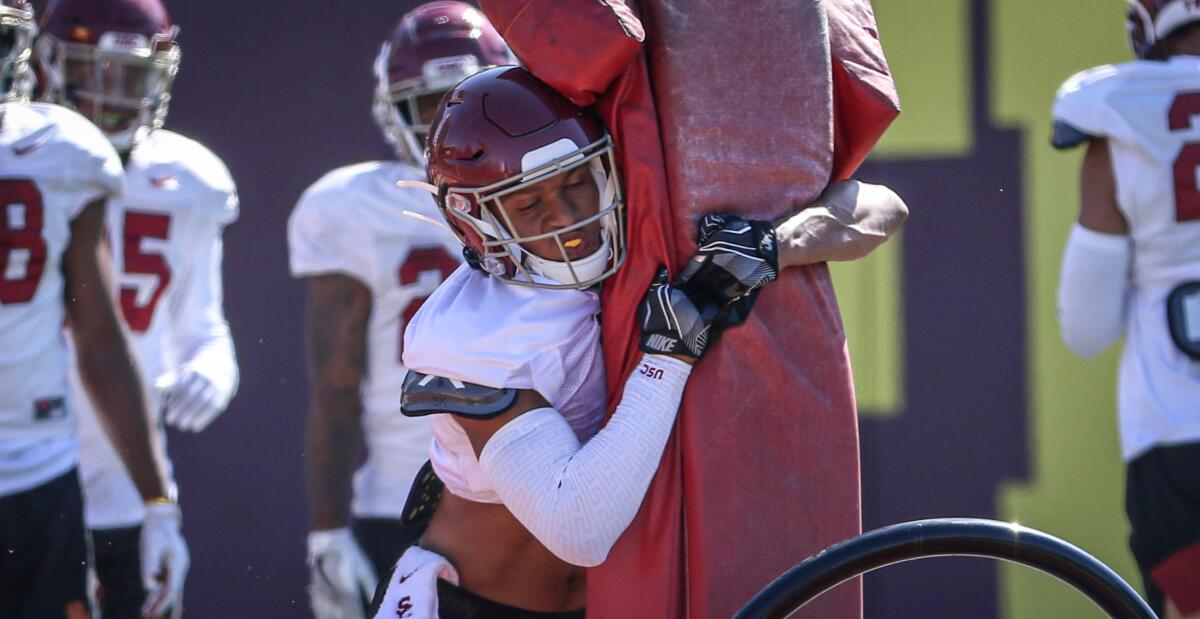
- Share via
SEATTLE — One starting cornerback stood on the sideline, still in concussion protocol. Another rode away on a medical cart, with a bulging disc in his back.
It seemed like a nightmare scenario for an unproven secondary, which desperately needed to hold for USC to stave off Utah’s ball-control offense. But as freshman Chris Steele stepped in for his first career start and sophomore Greg Johnson shifted from the slot to the outside, a patchwork Trojans secondary just happened to play its best half of the season.
“Without a doubt,” Steele said, “it was a statement.”
The shorthanded secondary’s surprise showing helped propel USC to an important 2-0 start in the Pac-12. But with an even taller task looming in Seattle on Saturday, can an inexperienced group down two of its best defensive backs find a way ... again?
Over its first four games, USC’s defense has focused most of its attention on containing dual-threat quarterbacks. It hasn’t yet faced a passer with the level of arm talent it’ll see against No. 17 Washington and Jacob Eason.
Asked about Washington’s new quarterback, who transferred from Georgia in 2018, Steele didn’t mince words.
How will Matt Fink fare against Washington’s secondary when the USC quarterback makes his first start on Saturday?
“It’ll be our biggest test so far,” the freshman cornerback said.
One made all the more difficult by the absence of Talanoa Hufanga, the Trojans’ standout sophomore safety, who has proven to be one of the defense’s most irreplaceable pieces. After recording double-digit tackles in five of his last six games, Hufanga will miss the game Saturday as he remains in concussion protocol.
Olaijah Griffin, who was carted off with back spasms last Friday against Utah, will also miss the game, leaving Steele in place for another start. USC will get back Isaac Taylor-Stuart, who sat out against Utah because he was in the concussion protocol.
But to slow down Eason and the Washington passing offense, it’s still going to require another monumental effort from a shorthanded group.
That’s not to say it can’t be done. Three weeks ago, in a game delayed by inclement weather, California’s stifling defense shut down Washington’s cannon-armed quarterback, limiting him to 162 yards as Eason spent most of the night running from pressure.
A similar blueprint could work for USC’s defense, which has at least three sacks in three of four games. Where the Trojans have struggled to contain elusive quarterbacks, they haven’t had much issue infiltrating the pocket.
“[Eason] can make all the throws, if he doesn’t have that pressure in his face,” linebacker John Houston said. “We just have to give him tighter windows.”
While its defense ratchets up the pressure, USC’s offense must protect its quarterback at all costs from a similar fate. With Kedon Slovis (concussion protocol) out, the Trojans are down to one scholarship signal caller, Matt Fink, whose heroic performance vaulted USC past Utah.
National college football writer J. Brady McCollough predicts who’s going to win selected games in Week 5. Cal will take down Arizona State, but USC and UCLA will lose.
But even Fink understands that Washington, which frequently disguises coverages, presents a different type of challenge.
“It puts a little more pressure on me,” Fink said.
Where USC’s secondary has faced plenty of doubt early on this season, Washington has silenced any such concerns. The Huskies, led by versatile senior safety Myles Bryant, rank second in the Pac-12 in passing yards allowed. Since 2017, only one player has thrown for 300 yards against Washington.
USC can’t count on that level of consistency. But if last Friday was any indication, a shorthanded secondary could still be enough for the Trojans to escape Seattle unscathed.
When one goes down, another goes in, and they’re producing just as much,” Helton said of his secondary. “Have they made mistakes? Yeah, they’ve made some. But they’re growing from it, learning from it. It’s a great thing to see.”
More to Read
Go beyond the scoreboard
Get the latest on L.A.'s teams in the daily Sports Report newsletter.
You may occasionally receive promotional content from the Los Angeles Times.

